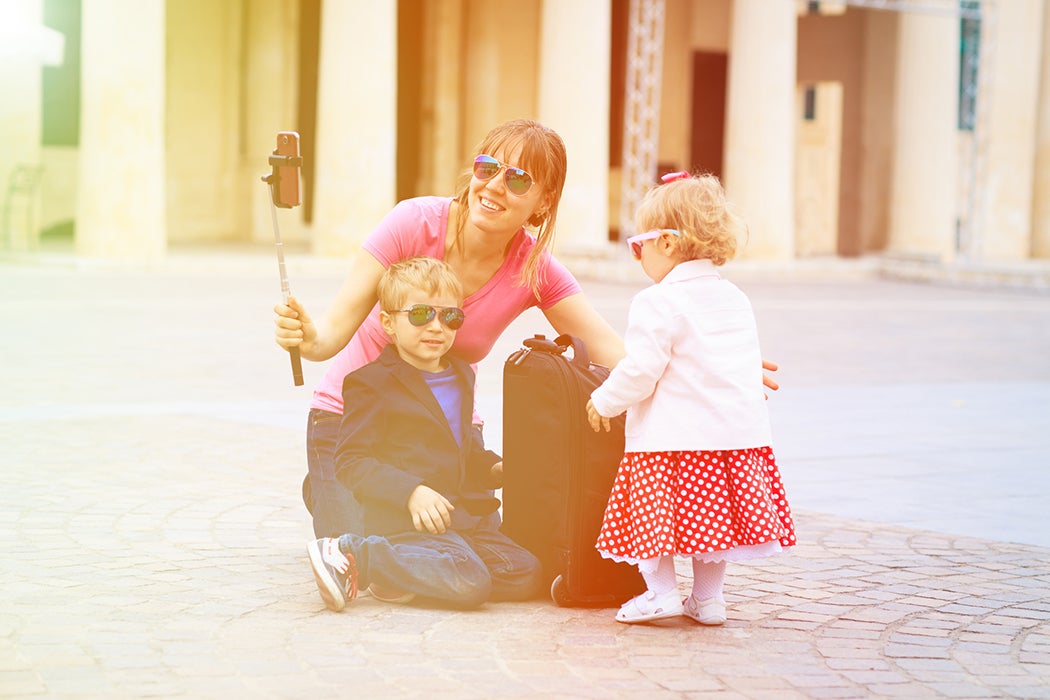The term “child star” is almost synonymous with dysfunction, conjuring images of adult celebrities spiraling into addiction or crime, or “Where Are They Now?” features that examine the wreckage left behind after a reality show wraps for the final time.
Now that YouTube has killed the television star, social media has become the new small screen. Will stardom be as damaging for children who become famous on YouTube or Instagram?
Kids who go viral on social media are, in the vast majority of cases, accidental stars. There’s the baby who laughed hysterically at ripping paper. There’s Noah, a bespectacled two year old who blames Batman for drawing on his mother’s furniture. There’s “listen, Linda.” All were candidly captured by parents delighted by their children’s unscripted selves. The avalanche of affection on the internet was an unintentional side effect. This makes all the difference for today’s “talent.”
Lucia Palmer’s scathing criticism of the effect of reality television fame on minors highlighted key differences between the child stars of Jon and Kate Plus 8 days and those of Instagram.
“Reality television plays on voyeuristic desires by ignoring the people behind the camera, creating the illusion of observing an unknowing subject,” writes Palmer. “The lives of its participants are captured, packaged, and broadcast without their collaboration, creating an unequal power balance between the television show’s producers and its stars.”
By contrast, on social media, although they are also sponsored by big companies with their own agendas, the families maintain significantly more control. Parents who stumble upon fame inadvertently with their children are likely to handle it very differently from those who see their children as a means to gain fame.
For example, in a far cry from the stage moms of the past, the Stauffer family allows daughters Emma and Mila dictate the workload: “Emma doesn’t love making videos, and Mila wants to make them only when she wants,” reports The New York Times. “Ms. Stauffer has stopped cutting deals with companies that insist on giving her deadlines. ‘You can’t make 2-year-olds do anything,’ she said.”
This flexibility is a crucial difference between social media and reality TV stardom. The pervasiveness of reality television means having no lines drawn between the personal and the private. Lives are on display 24/7, regardless of propriety.
“On 16 and Pregnant, privacy invasions abound in the lives of the teenage mothers-to-be…In a particularly intrusive episode…The cameraperson follows the episode’s star, Farrah, and her mother into the girls’ bathroom, and the camera stays on their feet in the stalls as Farrah discovers blood in her underwear,” notes Palmer. Research shows that the pressures of a life on television can and do impact a child’s life. As do the stars themselves.
Kristin Cavallari, who skyrocketed to fame on MTV’s reality show Laguna Beach, had to grapple with her TV persona, who had been packaged as (according to then-boyfriend) “a fun hook-up but not girlfriend material.” On a trivia show, a fan won a prize for how well they knew Kristin’s sexual history.
Speaking later, she said, “I almost felt like it was unfair for [MTV] to come into our lives at such a young age and sort of mess with things. I don’t regret it, but I was 17—of course I wanted to be on TV. I felt like they should have been a little bit more careful with us.”
Some of Palmer’s numerous reservations about child stars—a lack of concern for their well-being, a lack of authenticity, a lack of diversity—have been addressed by an organic but drastic change in how we come to know them. When it comes to the stars of social media, most of the time studios and agents no longer make children into stars; rather, it’s chance, appeal, and a fascination with the way happy children behave.
Of course, fame is still fame, and there are questions swirling around what the future holds for the child stars of social media. The field is too new to have definitive answers, and labor and child protection laws have still to catch up.
In The Guardian, Professor John Oates warned against the risks of making children go viral, including mental fatigue, anxiety, risk of bullying, or a loss of a sense of autonomy. Parents also have to seriously consider the safety risks involved in putting their children on public display, or opening themselves up to an unpredictable public.
Still, he concedes, thanks to the involvement of parents, the limits of the medium and a distinct lack of camera crews and scripts to follow, “the children of YouTube probably don’t face the same risks that drove traditional child stars like Lindsay Lohan or Macaulay Culkin off the rails.”








[…] from JSTOR Daily, on social media child stars and whether we should read the […]